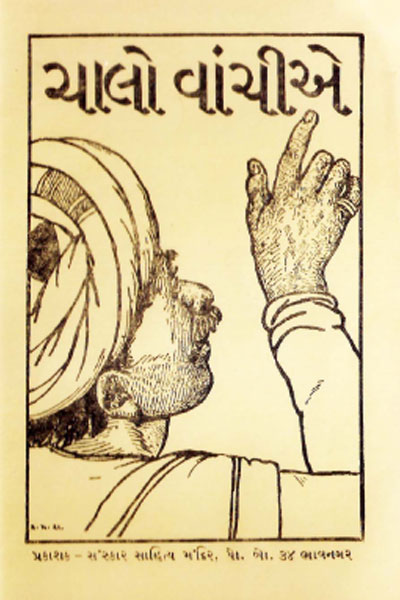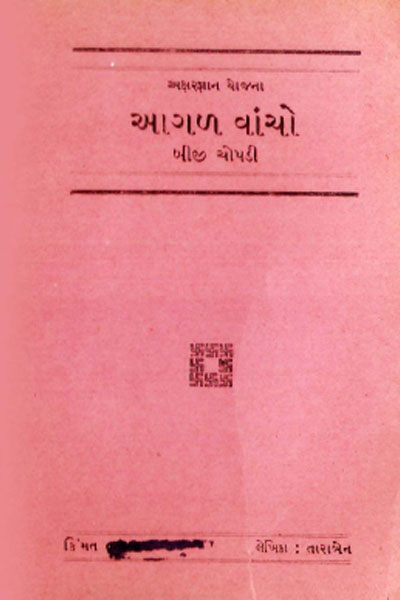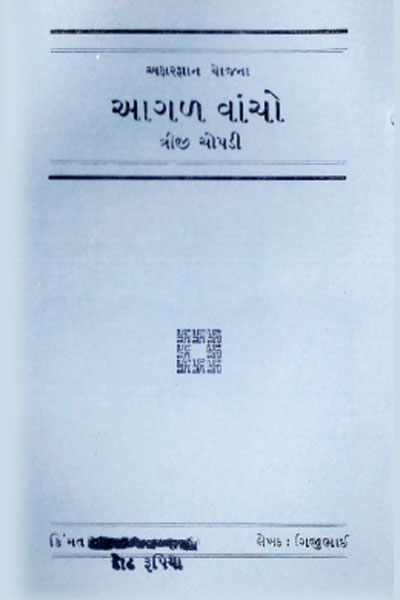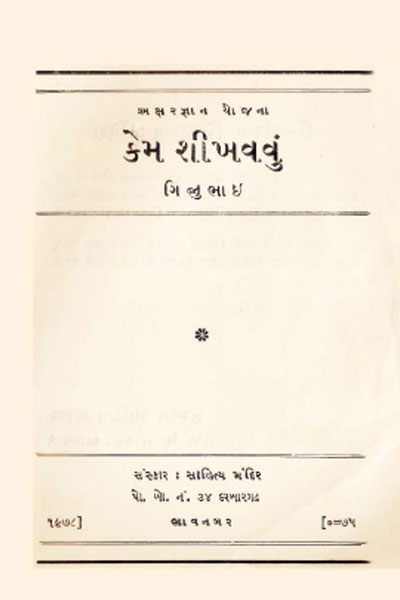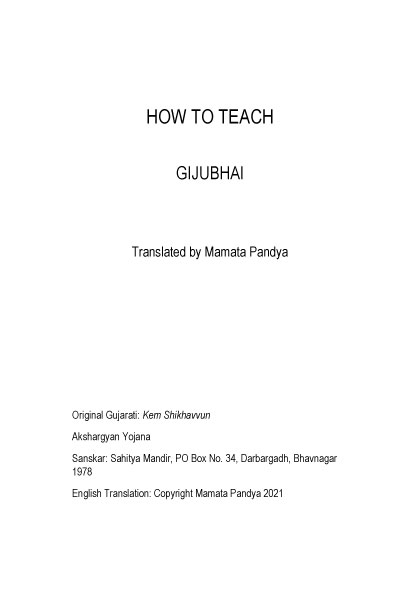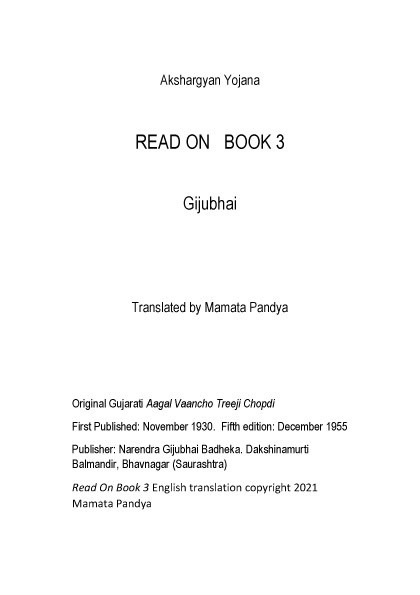Adult Education &
The Nationalist Cause
From 1920 onwards, the country was plunged into a nationalistic fervour with Gandhi showing a hitherto untried path of non-violent protest against the British rule. The Dandi March of 1930 took the fervour to new levels. People old and young, men and women, of all professions and trades participated in every way that they could.
On his Balmandir hill, Gijubhai thought Bapu says that everyone can take part in this non-violent battle-men and women, young and old, even children. He thought “I am a teacher, I am a teacher of children, how can I contribute to the liberation of my nation?’ He sought the best way by which he could contribute to the ongoing nationalistic movement. And he decided that his most effective contribution could be in the mission to spread literacy, especially adult literacy.
In 1930 Gijubhai started experimenting with adult education pedagogy and wrote a number of resources to support adult literacy training including reading primers as well as developing guidelines for the educators.
To develop a literacy plan in theory was not the same as actually implementing it on the ground. And Gijubhai was nothing if he was not one to experiment on the ground. As he thought of and developed suitable material Gijubhai simultaneously tried it out. The first ‘student’ was Bijal, the watchman of the Balmandir. Gijubhai gave him a slate and chalk and started ‘classes’. Gijubhai developed the lessons that would become the booklet Chalo Vanchiye (Let Us Read). In a month Bijal was able to read and write the basics.
Once the booklet was ready Gijubhai gave a clarion call to the youth of Gujarat to take up the challenge to educate every illiterate person in Gujarat. He encouraged young people to start night schools, to go from village to village and start literacy classes; to go from street to street and locality to locality with this mission, enrolling men and women to join. He gave the example of how in China, in just one year, the youth could make the entire country literate. He was confident that if the youth took up this mission, Gujarat would be able to achieve complete literacy.
In the booklet Kem Shikhavvun (How to Teach) he wrote: every one of us-old or young, who is educated or can teach, let us all enter the arena and put all our efforts to remove the stain of illiteracy that has been our bane, directly and indirectly since the ages. God will give us success in our efforts.
The literacy programme was launched. Akshargyan Shala (Literacy schools) were set up in every village. Bhavnagar state gave full support to the cause. Gijubhai, Taraben and their companions began to travel as far as to Talaja and Mahuva.
Gijubhai observed, practised and followed every step of the plan; noting what was working and what was not; mentoring and supporting the educators. He developed guidelines on how to deal with adult learners, how to hold their interest, and how to keep up the enthusiasm of the educators. He detailed every small step in the booklet titled Kem Shikhavvun.
While Kem Shikhavvun provided the 'How to Teach' for the educators, Gijubhai also developed simple language primers that provided the ‘What to Teach’ for the learners. After his first experimental booklet Chalo Vanchiye (Let us Read) Gijubhai developed Aagal Vaancho 1 (Read On), Taraben wrote Aagal Vaancho 2 and Gijubhai completed the series with Aagal Vaancho 3.
These books provided the foundation for literacy education. What is interesting about these is that while they start with basic vocabulary and simple words and gradually build on that, the pieces in the Books 2 and 3 all deal with simple social messages for the villages-keeping homes clean, good agricultural practices, health and hygiene etc. The style and delivery is very different from the writing for children or parents. The language is colloquial and the voice is direct and simple.
Once the basics were established, here was already a wealth of Gijubhai's other writing for children and youth which could be used as best suited.
Balsahitya Gucchh - This series covers different aspects of nature, science, observations of the environment, village life, short tales and more.
While originally written for children it was later also recommended to be used as resources under the National Adult Education Programme (NAEP) that was launched on October 2, 1978, and the National Literacy Mission (NLM) started in 1988. The title page of the reprinted series says that ‘as per the directive of the Adult Education Officer dated 24-4-1989 this series has been recommended to be bought by all Jan Shikshan Kendras and Nonformal Education Centres’.
As the movement spread, there was also a growing need for more trained volunteers and educators. Gijubhai started the Gram Adhyapan Mandir (Rural Training Centre) where he trained his fellow educators like Ishwarbhai, Chandrashankar Yagnik, Tribhuvan Vyas and others and assigned one centre to each one.
Contributing to the Satyagraha Movement
As the Akshargyan Yojana was taking off, the entire country was plunged into a tense political situation. Gandhi and many of his followers were in jail after the Dandi March in 1930; there were protests which were answered by police atrocities and arrests across the state.
Gijubhau set off with his companions Taraben and Monghiben, as well as Jugatrambhai for south Gujarat.
Farmers who had been displaced from Bardoli taluka had fled to Navsari in south Gujarat, and were camping in the forest. Gijubhai was moved by their plight. He decided to camp in the forest with them, and help them in the way he knew best. From the very next day he collected all the children; made sure that they were bathed and groomed, and started a routine of games, songs, stories, and basic reading and writing. With the adults he shared bhajans and religious kathas, on the banks of the Purna river. The presence of Gijubhai and his companions brought a sense of comfort and strength to the camping farmers.
Gijubhai and his companions would go from tent to tent as the meals were being cooked on the chulhas, asking after the welfare of the inmates. They would share news of Gandhi and Sardar Patel, and words of encouragement and support. In the midst of all other preoccupations, Gijubhai found time to write letters to his colleagues and young friends describing his experiences and thoughts. (Letters from this period Tapaalma In the Post)
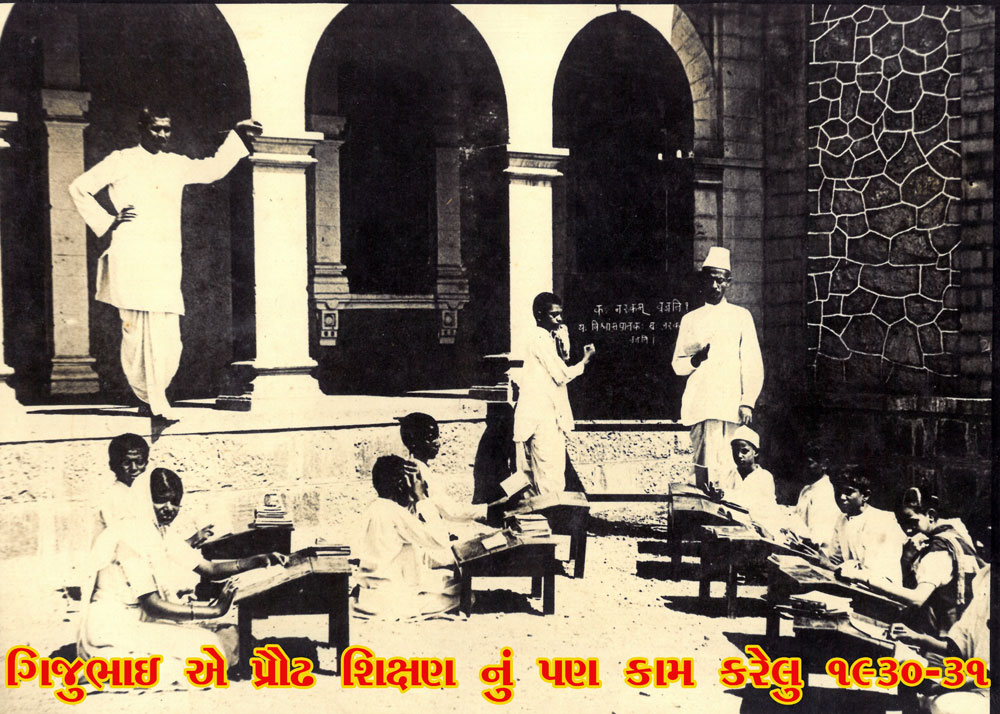
Adult education and literacy programme 1930-31
Around this time as he travelled from village to village and town to town also organised children into Vaanar Sena (Monkey brigade) and Maanjar Senas (for younger children). The young and energetic troops would take out (prabhat feris) dawn processions singing bhajans and announcing the next meetings. They would lead the adults’ marches and join the picketing of liquor shops and boycott foreign goods. They would make a nuisance of themselves to shopkeepers and even the police. Gijubhai believed that children could also play a part in the Satyagraha movement. He took it upon himself to explain to his vanaar sena what this was all about. What did independence mean? Why are we asking the English to go back? Why should we not use foreign cloth and boycott liquor?
The Vanaar Sena convention was held at Surat and Gijubhai was its main organiser. With his characteristic ease Gijubhai communicated beautifully with his young and younger senanis.
With the signing of the Gandhi-Irvin Pact in March 1931, Gijubhai and his team returned to their work on the Dakshinamurti hill.
The effective approach of Gijubhai’s innovative literacy plan was noted by many. Among them was Balasaheb Kher. In 1937-38 when Mumbai state gained regional autonomy, Balasaheb Kher became its first ‘premier’ he invited Gijubhai to come and head the Adult Education Department of Bombay State. But Gijubhai politely declined, immersed as he was then in his primary passion-Children.
Source: Gjubhainu Kelavni ma Pradaan Bharatlal Pathak
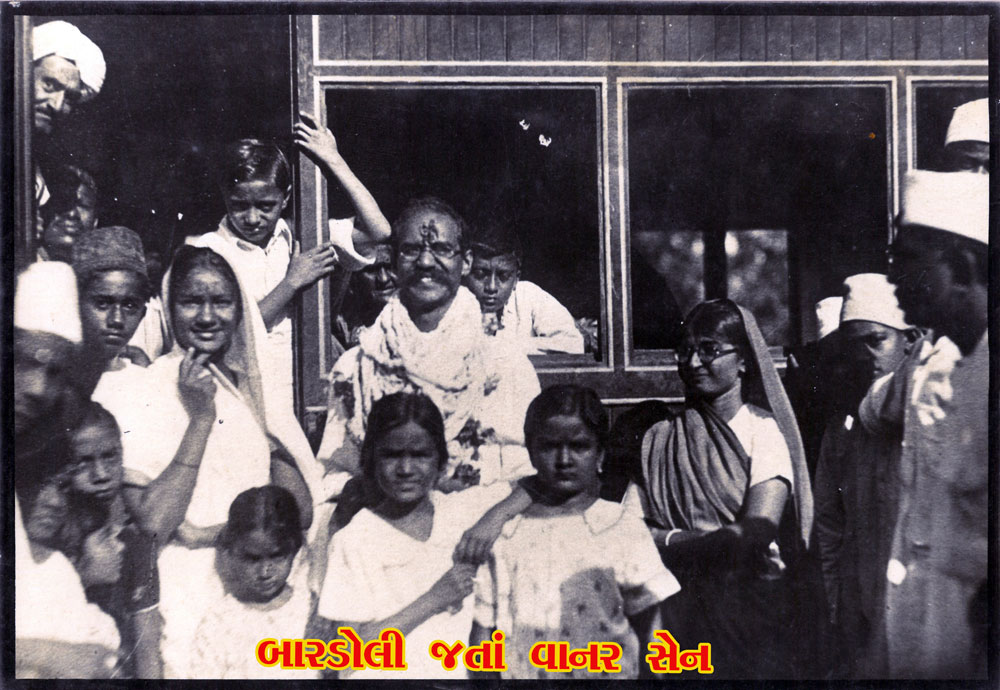
Vanar sena on the way to Bardoli
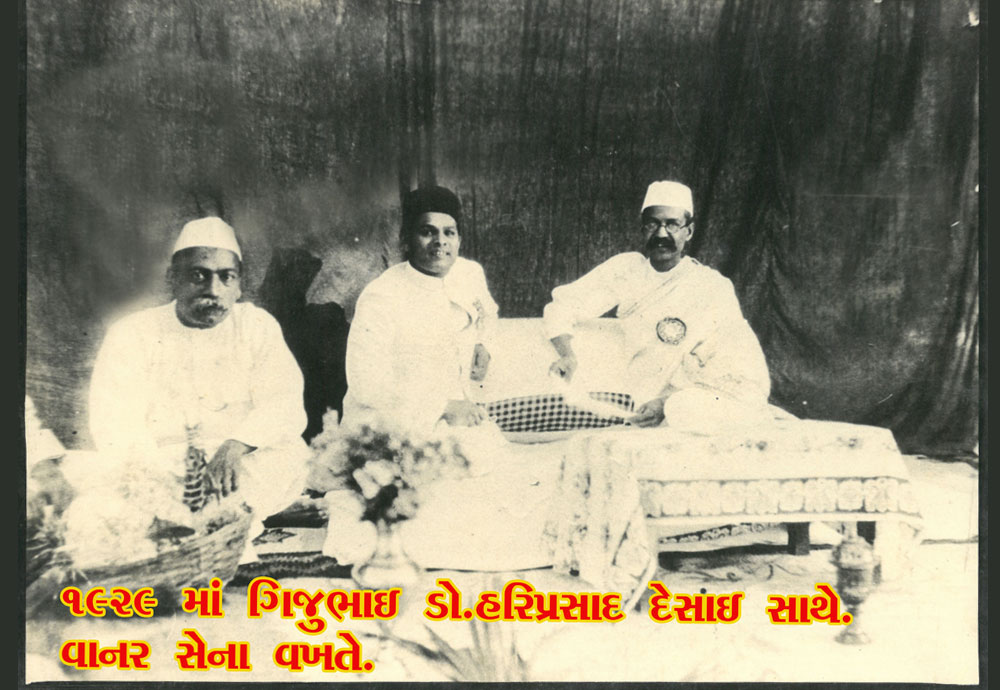
Gijubhai with Dr. Hariprasad Desai during Vanar Sena
Mahatma Gandhi's Tribute to Gijubhai
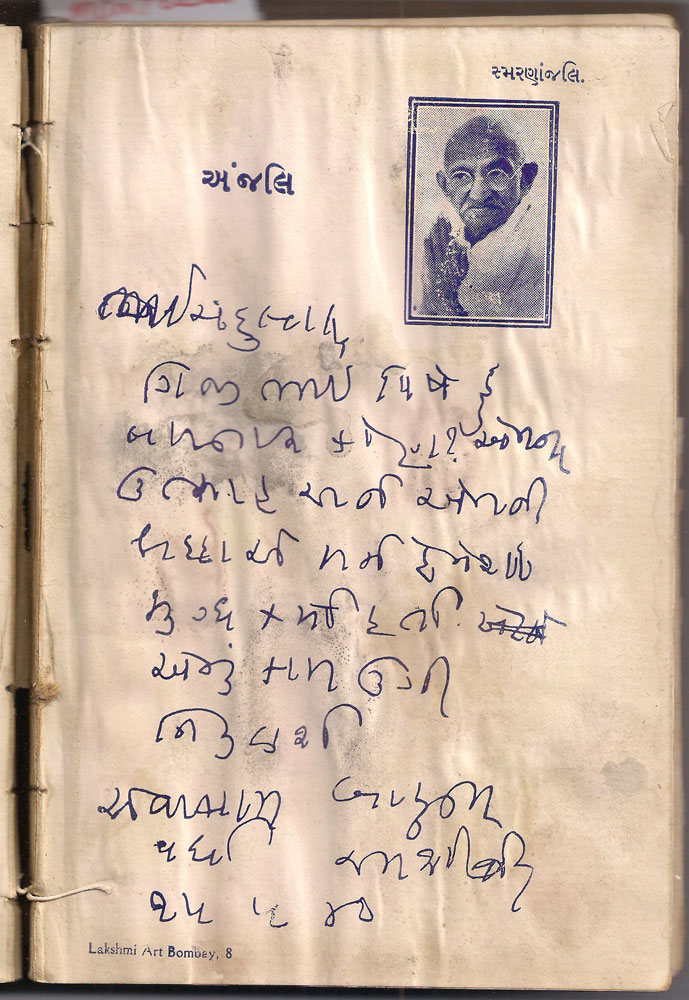
Books on Adult Education
ચાલો વાંચીએ
(Chalo Vanchiye)
અક્ષરજ્ઞાન યોજના
(Akshargyan Yojana 1)
Let Us Read
Reading Primer 1
Author: Gijubhai Badheka
Language: Gujarati
Format: PDF
આગળ વાંચો બીજી ચોપડી
(Aagal Vancho Beeji Chopdi)
અક્ષરજ્ઞાન યોજના
(Akshargyan Yojana 2)
Read On
Reading Primer 2
Author: Gijubhai Badheka
Language: Gujarati
Format: PDF
આગળ વાંચો ત્રીજી ચોપડી
(Aagal Vancho Treeji Chopdi)
અક્ષરજ્ઞાન યોજના
(Akshargyan Yojana 3)
Read On
Reading Primer 3
Author: Gijubhai Badheka
Language: Gujarati
Format: PDF
કેમ શીખવવું
(Kem Shikhavvu)
અક્ષરજ્ઞાન યોજના
(Akshargyan Yojana)
How to Teach
Author: Gijubhai Badheka
Language: Gujarati
Format: PDF
